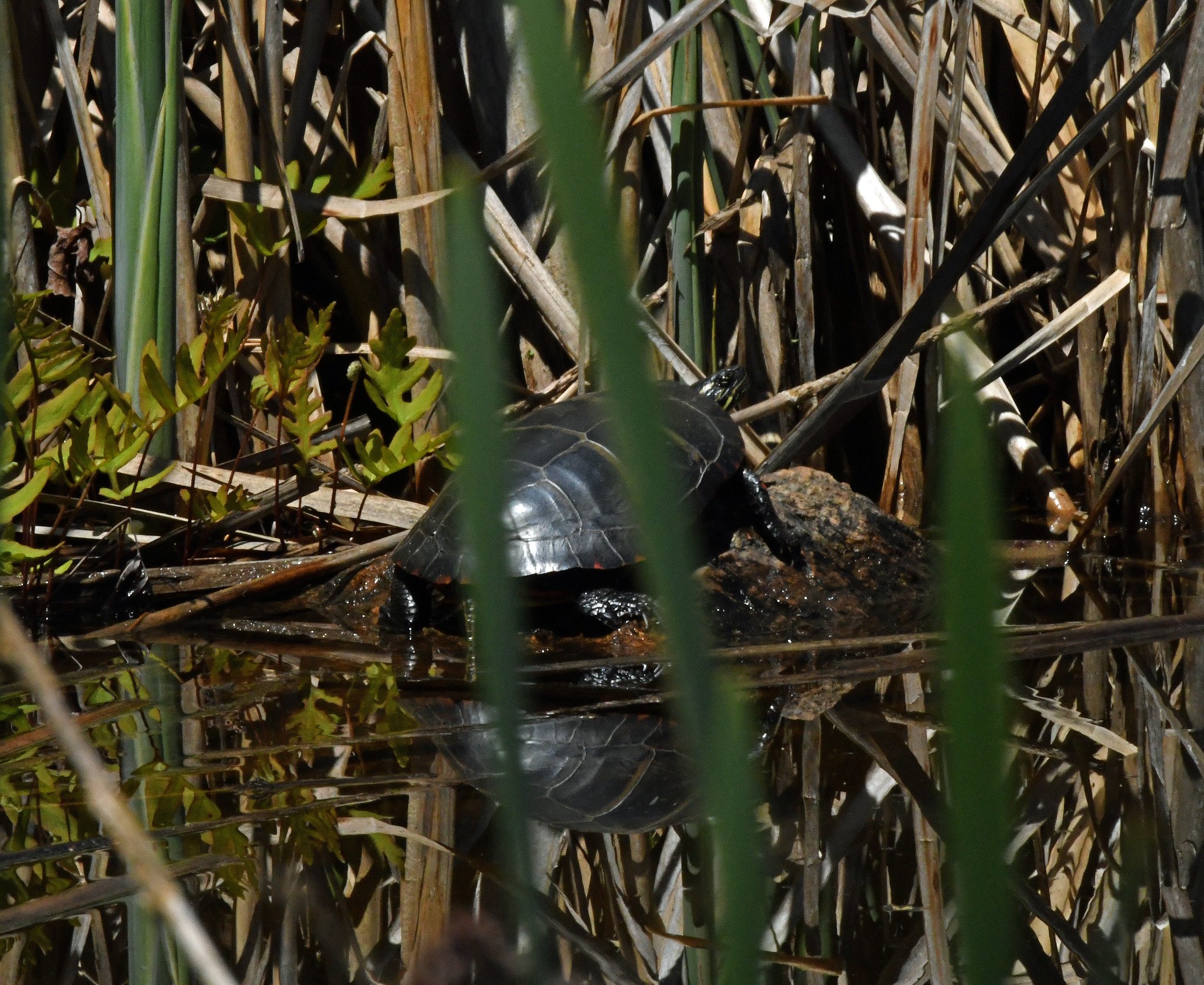It can be difficult to get a good photograph of an Eastern painted turtle in rural Maine without a super-powerful lens. Our PTs (Chrysemys picta picta) often are very uncomfortable seeing people nearby, unlike some turtles that have gotten accustomed to being ogled in more populated areas. However, being aware of a few facts from the research literature might help increase your turtle-vs-splash image ratio.
The painted turtle’s most developed defensive sense is its sight, which is good at a distance. Its senses of smell and hearing appear to be short-range.
Thus, when hunting with a camera, if you see a basking or otherwise exposed PT at a significant distance and it doesn’t immediately dive, don’t stop to watch and don’t walk toward the turtle. Walk slowly out of its sight and stay there a while (five minutes, if you can stand it). Then, if you can, devise an approach that keeps you out of the turtle’s sight until you get within shooting range of the reptile. If you have a “Quiet” shutter mode, put it on.
When you get within range, slowly step into a position in which you can focus on the turtle; begin shooting as soon as you do, even though it means focusing through vegetation. (It may be the only image that you get.) Keep moving slowly and shooting with the hope that you’ll reach a point with a clear line of sight before the turtle dives:
Finally, don’t sneak up on the turtles in the same place often – they may decide that the place is too creepy to stay. It’s all part of working on your patience. (Images taken in Brooklin, Maine, on May 17, 2022.)

